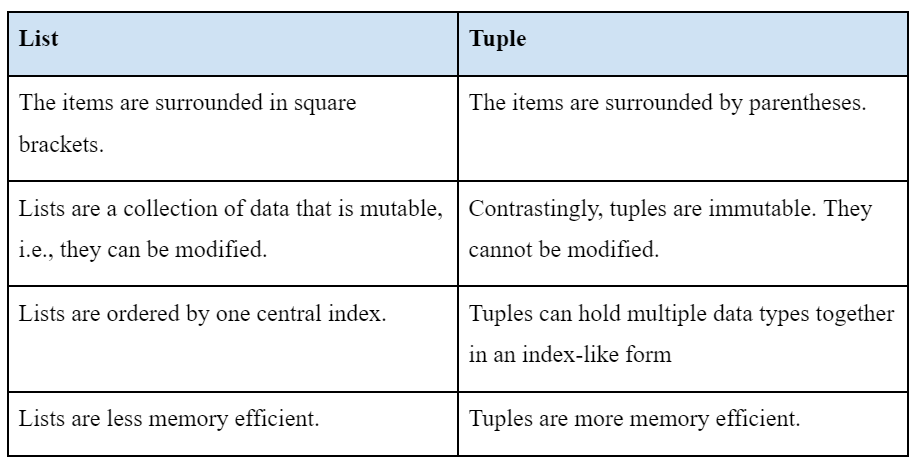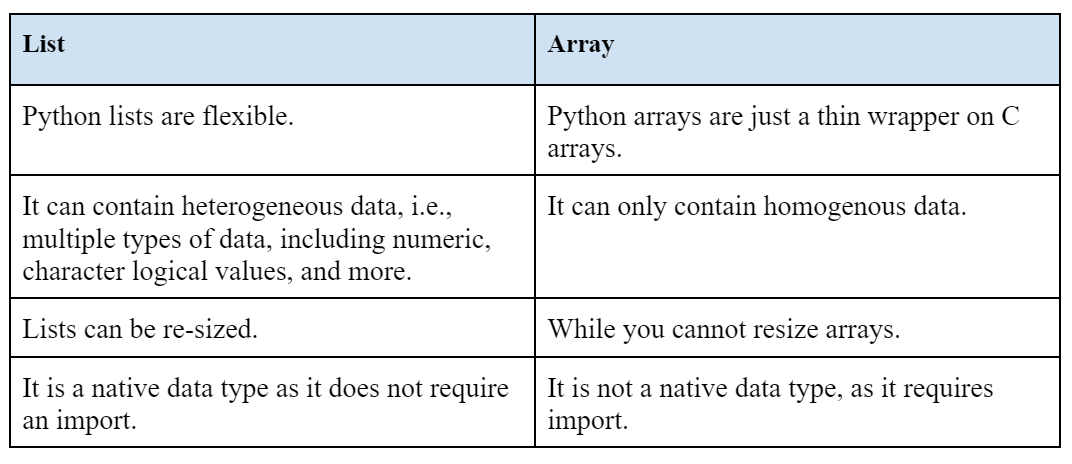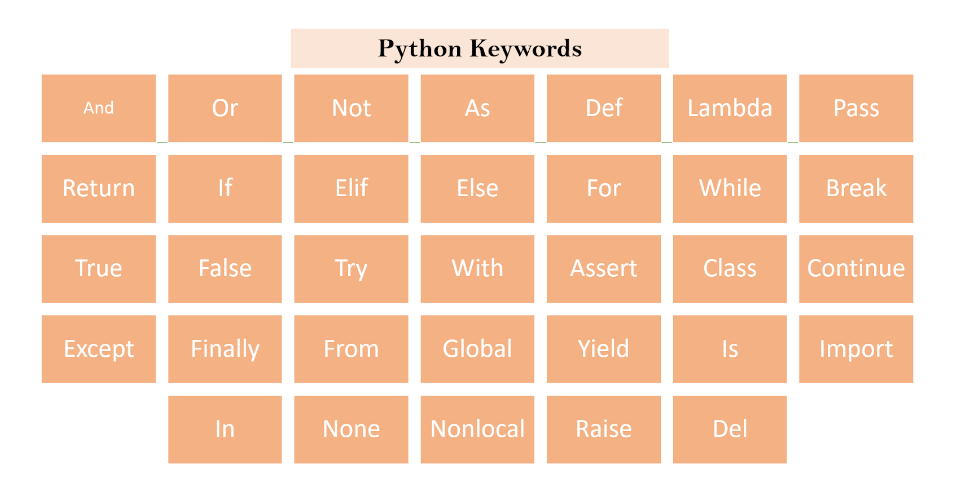Python is a language that allows you to create dynamic programs. Programming languages rely on data structures and algorithms, which are important and difficult to master. This is why hiring managers choose Python data structure interview questions when interviewing candidates for software engineering positions.
Going through essential theoretical concepts and exercising problem-solving skills is the best method to prepare for data structures in Python interview questions. It is highly advised that you answer at least 1-2 Python data structures interview questions per day if you have a technical interview coming up.

Python Data Structure Interview Questions and Answers
“Python has been an integral part of Google since the beginning. It remains so as the system grows and evolves. Today dozens of Google engineers use Python, and we're looking for more people with skills in this language." ?
- Peter Norvig
Director of search quality at Google, Inc.
Prepare for your upcoming tech interview with the 16 most frequently asked Python DSA interview questions. Continue reading to learn the most important Python concepts.
Q1. What is the Difference Between a List and a Tuple in Python
This is one of the basic Python data structures interview questions. Lists are mutable. This means their elements can be altered. Tuples, instead, are immutable. This means that they only support fixed data integrity. Tuples require fewer bytes in memory and are faster to iterate than lists, so they are employed wherever the data is constant and not likely to change during the lifetime of a program.

Q2. How is a list different from an array?
The differences between lists and arrays are:

Also read: Concept of Arrays in Data Structures
Q3. Describe three advantages of NumPy arrays over Python lists
This is yet another popular Python DSA interview question. The three advantages of NumPy arrays over Python lists are:
- NumPy array is faster. The size of the NumPy arrays increases. It can become thirty times faster than Python lists.
- NumPy is more efficient and convenient. It comes with several vector and matrix operations for free, which helps avoid unnecessary work. Moreover, they can be implemented efficiently.
- Lastly, Python lists have certain limitations, like they don’t support element-wise addition, multiplication, and other vectorized operations. In addition, since lists contain heterogeneous objects, Python must store type information for every element. Contrastingly, arrays have homogeneous objects and thus escape these limitations.
Q4. Why is Python a dynamically typed language?
This is one of the most common Python DSA questions asked in a tech interview. Python is a dynamic language since the type of variable will be decided at runtime rather than compile time. In dynamic languages like Python, you don't explicitly declare the types of variables. This leaves the variables to carry different data types throughout their existence. For example, you might assign an integer value to a variable named ‘x’ and later change it to assign a string value. This flexibility eases the development but, increases the chances of runtime errors if data types are mishandled.
Q5. What do you understand about inheritance in Python?
To answer this Python data structure interview question, you should know that inheritance is the property of one class to attain all the members (attributes and methods) of another class. Inheritance allows the reusability of code and makes it easier to create an application. It gives rise to two types of classes:
- Superclass is the class from which we are inheriting. It is also called the base class.
- Derived Class is the class that is inherited. It is also called the child class.
The various types of inheritance in Python are:
- Single Inheritance is when a derived class takes the members of a single superclass.
- Multi-level inheritance is when a derived class d1 is inherited from the base class- base1, and another derived class d2 is inherited from base2.
- Hierarchical inheritance allows the inheritance of a number of child classes from a single base class.
- Multiple inheritances are when a child class is inherited from more than one superclass.

Q6. What do you understand about the join method in Python?
The join() method in Python is a helpful approach to piece together the elements available within an iterable (like lists, tuples, and sets) into one string with a specified separator. This makes it great for formatting output strings or combining data. For example, '-'.join(['a', 'b', 'c']) would have returned 'a-b-c'. The iterable must be string type otherwise an error will be thrown. This is far more efficient than manual concatenation inside of loops.
Q7. What are control flow statements in Python?
This is a common Python data structure interview question asked in tech interviews. A program’s control flow refers to the order in which the program’s code executes. In Python, the control flow is regulated by conditional loops, statements, and function calls.
It has three main types of control structures:
- Sequential is the default mode
- Selection is used for decisions and branching
- Repetition helps in looping
Q8. Explain memory management in Python.
Python memory management is performed by its private heap containing all objects and data structures. Python memory manager auto-manages dynamic memory allocation. The built-in garbage collector is used for releasing memory from the objects that are not being referred to, reducing the possibility of memory leaks. Developers can now concentrate on the logic without having to think about memory allocation at low level. Also, memory is divided into sections like stack communicating portion and allocate allocation fragment for improved performance.
Q9. What are modules in Python? State a few benefits of modules.
This Python data structure interview question tests your basic understanding of the language. A Python module is a file containing a set of variables and functions that can be used in an application. The variables can be in the form of arrays, dictionaries, and objects.
Modules fall into two main categories:
- Built-in
- User-defined
Modules allow structured code organization wherein code is logically grouped into a Python file. Thus, making development easier and less error-prone.Reusability of code as functionality in a single module can easily be reused. There is no need to recreate duplicate code. Some common built-in modules are math(), random(), and os(). Developers can also create custom modules.
Also read: The Best Data Structures and Algorithms Course to Crack FAANG Interviews
Q10. Explain slicing in Python.
Slicing in Python is the mechanism to choose a range of items from sequence types such as lists, tuples, and strings. For example, slicing a list refers to selecting a specific portion or a subset of the list for some function, and the rest of the list remains unaffected. So, you remove a piece without altering the rest of the contents.
The syntax for slicing a list is: List_name[start:stop:steps]
Q11. What are decorators in Python?
In Python, decorators are special functions that modify the behavior of another function or method without actually having to change its source code. These add extension/ functionality to an existing function without altering the structure of the function itself.
The syntax to apply a decorator would look like this: @decorator_name. Other common use cases include logging, authentication, and performance benchmarking. For example, decorators can track the time it takes for a function to execute, or inputs can be validated before the function runs. It allows for cleaner and modular code.
Q12. What are the differences between xrange and range in Python?
Although xrange() and range() are similar functions in generating a sequence of integers. The major difference is that range returns a Python list of integers while xrange returns an xrange generator object. So xrange() does not generate a static list; instead, it creates the value on the go.
Q13. Explain the Purpose of Generators in Python.
One of the most common Python DSA interview questions. Generators give us a memory-friendly approach to working with large datasets because they generate the values “on-the-fly” as opposed to bringing everything into memory. They are defined with a yield keyword, and they work great in situations where you do not need all the collection at once, for example, when working with large logs or processing real-time data streams.
Example:
def countdown(n):
while n > 0:
yield n
n -= 1
Q14. What are Python keywords? Give examples of keywords.
The Python keywords are a set of reserved words that have a special meaning and usage in the syntax of the language. They cannot be used as names for variables or functions. For example, if statements are for condition statements, while def is used to define a function.
Python 3 has 33 keywords and they are vital for the control structures and operations of the language.

Q15. What are pickling and unpickling in Python?
This is how you can answer this Python data structure interview question:
The process of pickling in Python is when the object hierarchy is converted into a byte stream. Contrastingly, the process of unpickling is the inverse operation. Unpickling involves byte stream conversion back into an object hierarchy. Pickling allows you to arrange Python objects in a serial and allows de-serializing.
Q16. What is lambda in Python? What are its uses?
In Python, lambda is an anonymous function. It can accept multiple arguments but has only a single expression. Lambda functions are used in situations needing an anonymous function for a short span of time. The uses of lambda functions are:
- They are used as small, single-line functions.
- They make code easier to read.
Sample Python Data Structure Interview Questions for Practice
Here, we glance over some additional Python data structure interview questions that you can prepare for your tech interview:
- What is Scope in Python?
- Python is what type of language programming or scripting?
- State some benefits of using Python as a programming language?
- How to convert a list into a string?
- How to count the occurrences of a particular element in the list?
- What is type conversion in Python?
- What are global, protected, and private attributes in Python?
- How do you write comments in Python?
- What is the use of self in Python?
- How do you debug a Python program?
- What is a negative index in Python?
- How do you set a global variable inside a function?
- Can you write a program to find the average numbers in a Python list?
- What new features does the Python 3.9.0 version include?
- What is the zip() function in Python?
- What is monkey patching in Python?
These top Python data structure interview questions will help you prepare for your software developer interview and ace it. After you've finished your preparation, you can take some mock interviews for self-evaluation.
Also read: Technical Interview Prep Checklist
Master the essentials of Python and Nail Your Next Python Data Structure Interview Questions
Data structures are one of the most basic concepts in backend development and these Python data structure interview questions will help you be prepared for any Python interview. With Interview Kickstart you can fast track your interview prep, and nail any job interview.
Led by industry experts (from the likes of Google, Facebook, and LinkedIn), our instructors will help you build a strong foundation in the subject, and give you all the tools required to be successful in your career and land your dream job.
You can check out some of the success stories of our alumni who have advanced their careers with the help of Interview Kickstart.
FAQs: Python Data Structure Interviews Questions
Q1. How to practice Python coding for tech interviews?
If you are a newbie in programming, you can attend a Python training course to understand basic and key concepts. You should practice Python coding regularly and prepare well for python coding interview questions.
Q2. What are Python data structure interview questions?
Python coding interview questions are asked to test your expertise and analytical skills. For Python data structure interview questions, you can expect questions related to keywords, architecture, frameworks, how to write a code or the program’s output, how to solve a particular scenario, etc.
Q3. What are data structures in Python?
Python includes four basic data structures: Dictionary, Lists, Set, and Tuple.
Q4. Which data structures are essential for Python interviews?
The important data structures for Python interviews are Array/List, Linked list, Hash tables, Queue, Stack, Trees (binary), and Graphs.
Q5. What is the difference between data structure and algorithm?
A data structure is concerned with effectively organizing and managing data so that a specific operation can be performed efficiently, whereas an algorithm is a step-by-step procedure to be followed to achieve the desired output.
Related Reads:







.svg)

.svg)


.png)






